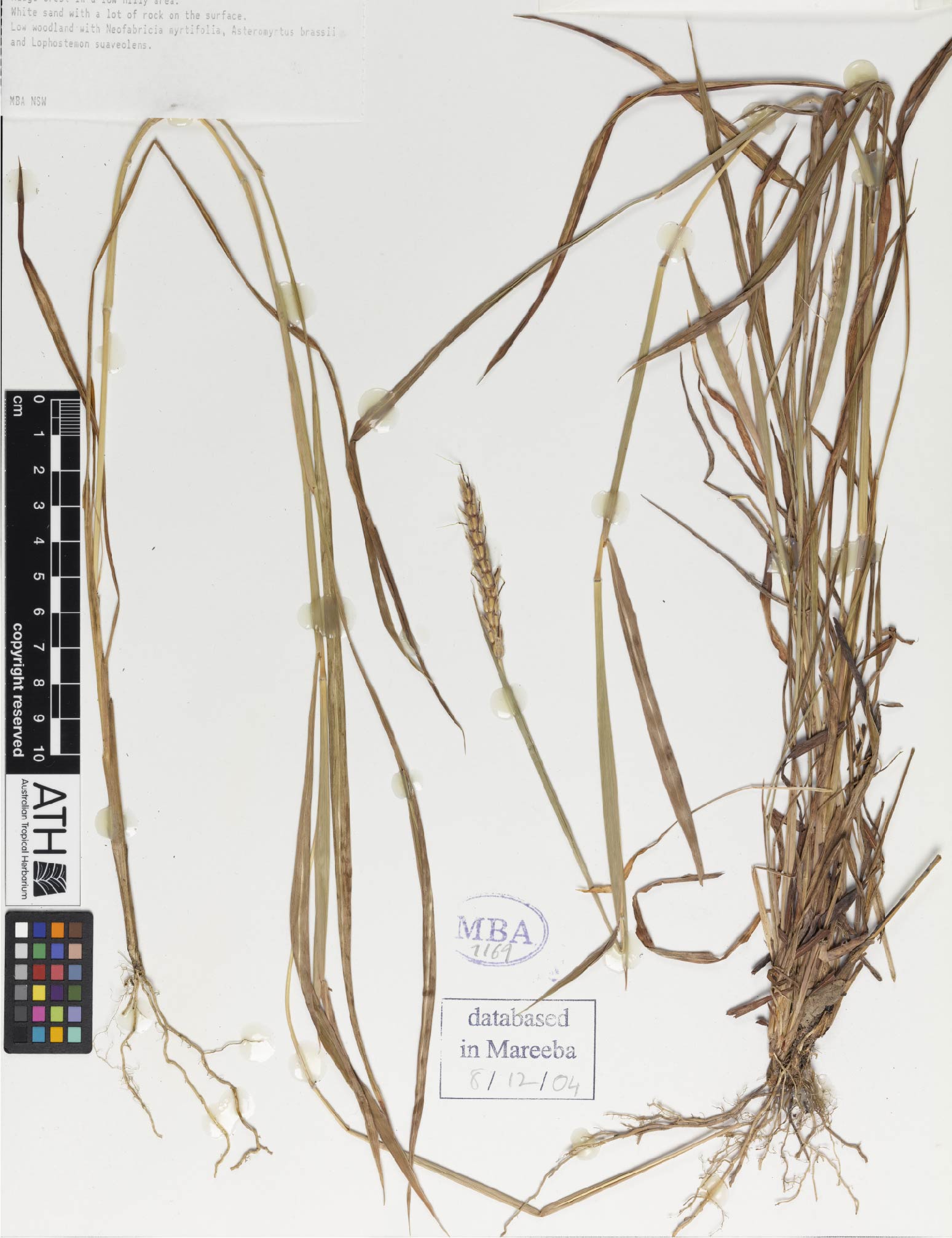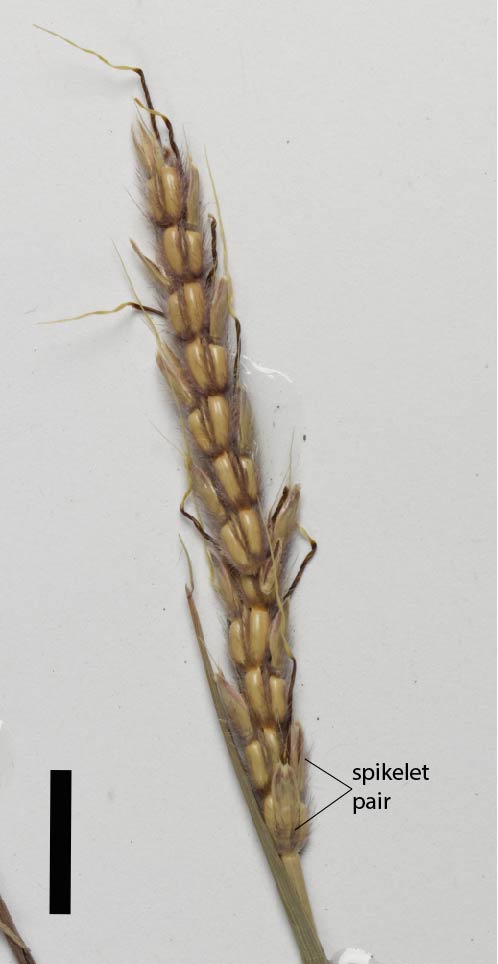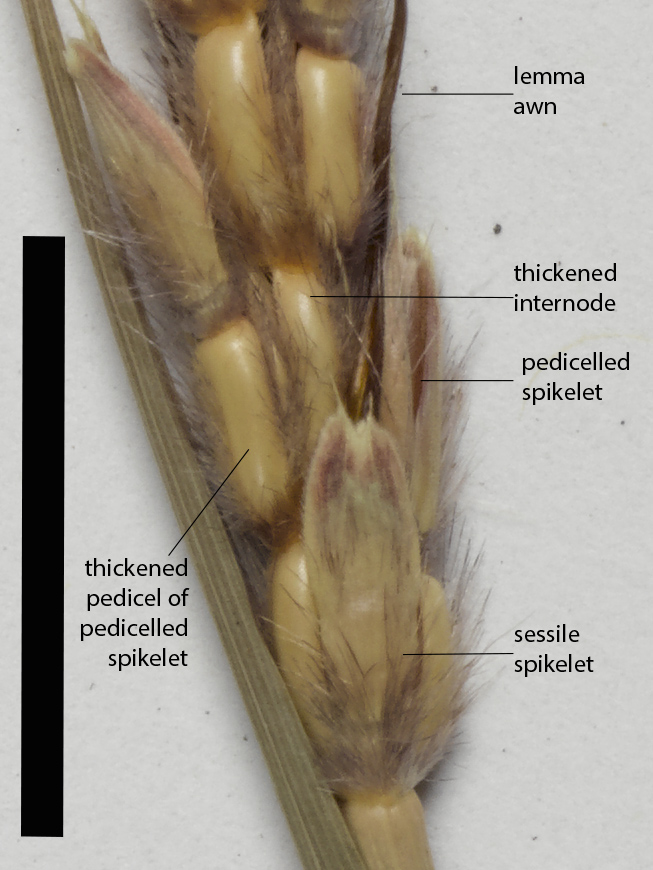Ischaemum fragile
R.Br.
This grass is an erect perennial up to 120 cm tall. The leaves are tufted basally but also arise along the stem (cauline). The leaf blades are long and narrow, either hairless or hairy and generally rough to the touch (Fig. 1). The basic flowering units or spikelets are arranged along a single spike like flowering head or raceme (Fig. 2). This spike or flowering head is usually well exserted from the leaves. The spikelets are arranged along the spike in pairs of one large stalkless (sessile) spikelet and one smaller stalked spikelet (Fig. 3), the stalks are thick and often swollen. The spike will break apart at maturity both between and within spikelet pairs. Spikelets without stalks are always prominently awned. This awn, which originates from the lemma of the sessile spikelet is twisted and bent, and 16-35 mm long.
Botanical Description
A perennial grass with culms between 40-120 cm high (Fig. 1). The leaves are cauline and basal, with leaf blades linear, from 6-33 cm long and 3-7 mm wide, glabrous or hairy, and rough to touch. The leaf sheath is glabrous or hairy. The inflorescence is comprised of one spike like branch or raceme, 3-7 cm long (Fig. 2). The spikelets occur in pairs, each pair consists of a sessile spikelet (bisexual) and a pedicelled spikelet (sterile or male) (Fig. 3). The sessile spikelets are 5-7 mm long, the upper glume with an awn 3-11 mm long, and a prominent awn arising from the lemma 16-35 mm long. The pedicelled spikelet can be either different or more or less similar to the sessile spikelet, between 3.8-6.5 mm long, the upper glume tapering into an awn like appendage and the lemma present or reduced, awns not or poorly developed or as in sessile spikelet.
Diagnostic Features
Ischaemum species are distinguished by: their spike like racemes in either solitary, paired or digitate arrangements, their prominently awned spikelets, their well-developed or swollen internodes, and their spikelets occurring in pairs with the stalked spikelet similar or subequal to the sessile or stalkless spikelet. Ischaemum fragile can be identified from other species of Ischaemum in the region by the single spike like flowering head, although take care with this character as the branches of other species e.g. I. australe (Fig. 4) can interlock and appear as a solitary stem. For more details on other characters which can separate this species see Simon & Alfonso (2011).
Habitat
In Australia this species occurs along the east coast of Queensland, across Cape York Peninsula, and across the Top End of the Northern Territory north of the Daly River; also known from New Guinea. Usually grows in swampy areas, along waterways and on edges of lagoons and floodplains, but also in savannas and open grasslands (Cowie et al. 2000; Simon & Alfonso 2011).
Land Management Notes
According to Lazarides (2002) these native perennials provide limited fodder.




Resources
AVH (2017) Australia’s Virtual Herbarium, Council of Heads of Australasian Herbaria, <http://avh.chah.org.au>, accessed 30 May 2017.
Cowie, I. D. & Short, Philip S. & Osterkamp Madsen, Monika, (2000) Floodplain flora: a flora of the coastal floodplains of the Northern Territory, Australia. Flora of Australia Supplementary Series Number 10. Australian Biological Resources Study: Canberra.
Lazarides, M. (2002) Economic attributes of Australian grasses. Flora of Australia 43: 213-245.
Simon, B.K. & Alfonso, Y. (2011) AusGrass2, http://ausgrass2.myspecies.info/ accessed on [date 29 March 2017].

